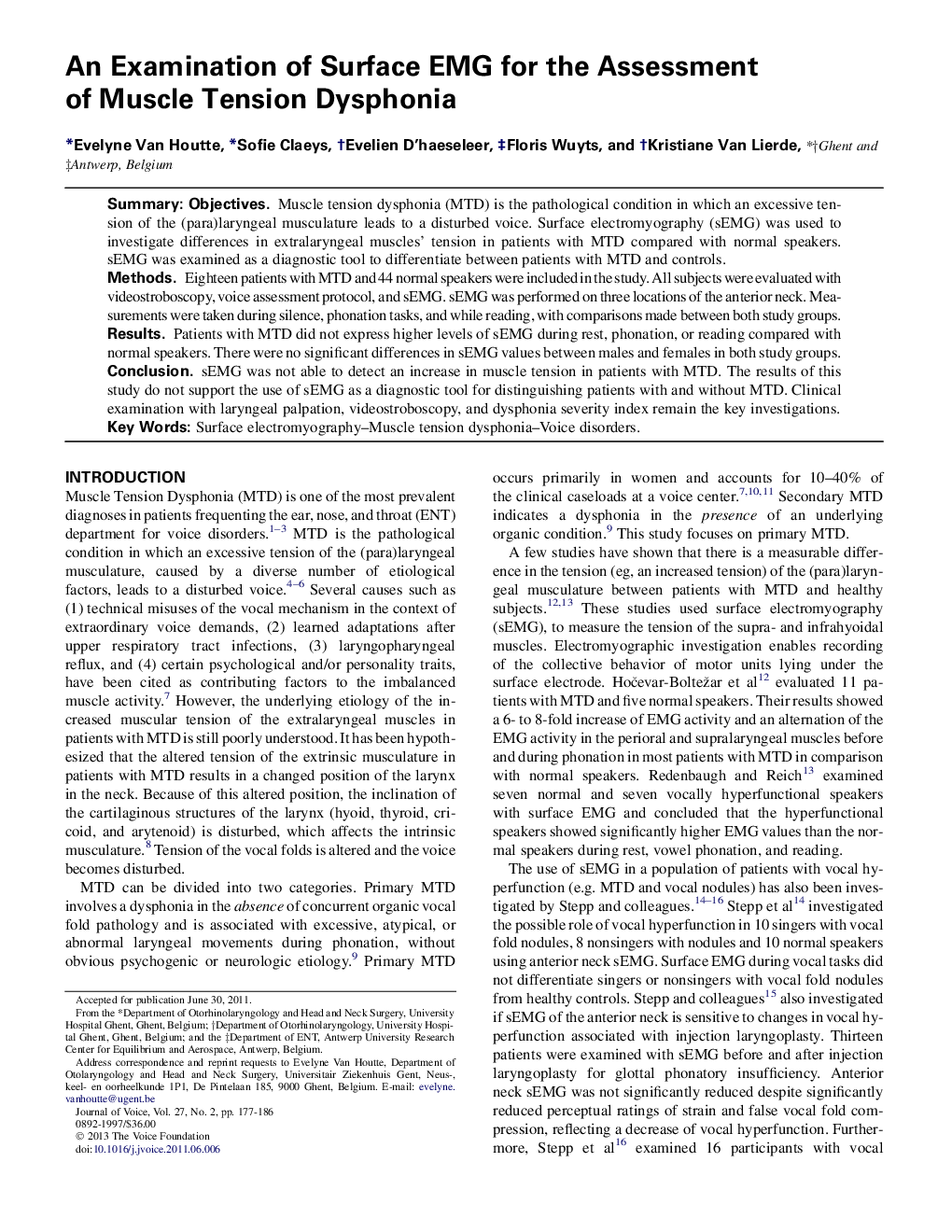| Article ID | Journal | Published Year | Pages | File Type |
|---|---|---|---|---|
| 1101438 | Journal of Voice | 2013 | 10 Pages |
SummaryObjectivesMuscle tension dysphonia (MTD) is the pathological condition in which an excessive tension of the (para)laryngeal musculature leads to a disturbed voice. Surface electromyography (sEMG) was used to investigate differences in extralaryngeal muscles’ tension in patients with MTD compared with normal speakers. sEMG was examined as a diagnostic tool to differentiate between patients with MTD and controls.MethodsEighteen patients with MTD and 44 normal speakers were included in the study. All subjects were evaluated with videostroboscopy, voice assessment protocol, and sEMG. sEMG was performed on three locations of the anterior neck. Measurements were taken during silence, phonation tasks, and while reading, with comparisons made between both study groups.ResultsPatients with MTD did not express higher levels of sEMG during rest, phonation, or reading compared with normal speakers. There were no significant differences in sEMG values between males and females in both study groups.ConclusionsEMG was not able to detect an increase in muscle tension in patients with MTD. The results of this study do not support the use of sEMG as a diagnostic tool for distinguishing patients with and without MTD. Clinical examination with laryngeal palpation, videostroboscopy, and dysphonia severity index remain the key investigations.
